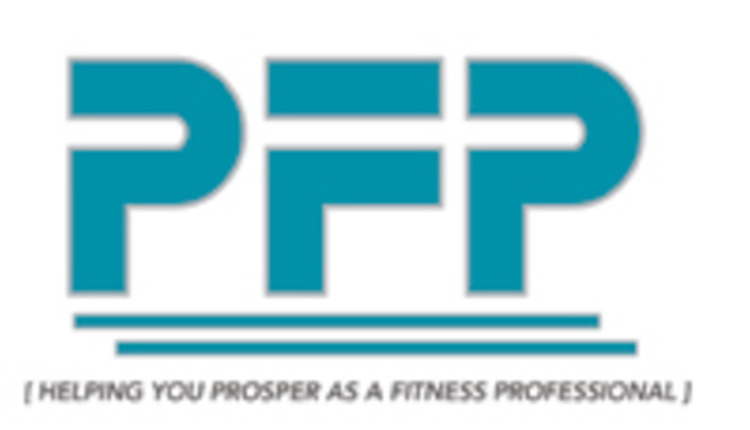If you're looking to hire a nice, cheery person to neatly put things in boxes and stick shipping labels on packages, you run an ad, conduct a few interviews and hire the best candidate. It's easy.
If you're looking to find someone who can answer your phones professionally, you may have to do a few more interviews than you would for the shipping clerk, but many candidates eliminate themselves during the initial phone call, and investing time in the hiring process is nothing more than a minor inconvenience with a valuable payoff.
If you have need for someone who can implement exercise training protocols, assess and evaluate physical fitness and connect with people at a level of rapport and trust, be prepared for a long and drawn out ride, during which you may pound your knuckles into your desk in frustration, pull a few clusters of hair from your head and scream obscenities at the top of your lungs.
I won't tell you about the stable-hand who applied for a position as a certified personal trainer because his brother told him that he's strong and works well with horses (apparently, he failed to identify the differences between homo-sapiens and equines). I also won't tell you about the Hooters waitress who applied because she takes aerobic classes and people tell her how fit she is. I won't wish these types of incidents upon you, but if you're new to recruiting fitness professionals, be prepared to dig through some mud to get to the treasure.
Don't Get Discouraged
Here's the most frustrating challenge. Unlike flipping burgers, fixing transmissions or supervising a hotel front desk staff, the job of a fitness professional doesn't translate well from facility to facility. In Club A, the fitness director might be responsible for selling personal training and may have achieved the position because he's the top producer. In health clubs that are purely membership-driven, such a trainer can find promotion even without a proven level of training competence or the proven ability to thrill clients. In Club B, a personal trainer may have an advanced degree in exercise science, extensive knowledge of the science of kinesiology and an almost intuitive knack for identifying muscle imbalances, but the position may ask little in the realm of these influences. In this example, you have two individuals perceived as professionals within their own corporate culture but with skill sets on opposing sides of the spectrum.
My intention is not to bash any facility, any fitness-related entity, nor is it to knock any existing or aspiring personal trainers. It is intended to provide you with the beginnings of a strategy if you have need for hiring a single fitness professional or building a team from management down. You need not lose hair or bruise your knuckles, but without a step-by-step plan, I'd say the odds are pretty high that you're going to at least shake your head vigorously from side to side, wondering what in the world the people who applied were thinking.
Find the Right Hire
Before I get to the step-by-step hiring strategy, a question begs to be addressed: Is it better to hire experience and train in the company culture, hire knowledge and instill rapport skills, or is it better to find the right raw material and invest in providing the technical skill?
I can only share an opinion created by a combination of mistakes and successes in recruiting and hiring. Experience often comes with instilled habits that may run counter to the culture you seek to cultivate and build. I certainly consider individuals with experience (one of my trainers has 32 years of experience), but it isn't enough. When I find someone with a long resume of fitness positions, I feel an obligation to probe even deeper than I might a recent graduate.
In answer to the question weighing knowledge and rapport skills, my worst hire ever had a PhD. Of the three alternatives, it's proven simplest to hire the personality and provide the knowledge than to attempt to give a lump on a log with lots of know-how a much-needed personality.
Here are steps to recruiting your fitness team:
Step 1: Assess the need, crystallize the culture and outline your UV and ESP.
It's easy to generalize and decide that you need a fitness professional to design programs and guide clients through exercise sessions, but that generalization is likely to prove more a trap than it may appear. Define your specific company culture, identify what need you hope to better fill by growing your service staff and crystallize your intended unique value (UV) and your extraordinary service potential (ESP). Your ESP is crystallized when you can concisely identify what you are capable of delivering, that which would place you above others in the perceived competitive arena.
Step 2: After considering the issues of finance, size, reach and possibilities for growth, determine how your team will be structured.
We often make the mistake of attempting to fit an individual into our structures by modifying the structures. I've found it better to establish the structure that will best serve the mission and best optimize the attributes of your UV and ESP, then seek the ideal candidates to plug into the pre-designed chain of command.
Step 3: Write detailed job descriptions, including skill sets, responsibilities, expectations and guidelines.
The first three steps are time-consuming, and, as a result, they're often ignored. The consequence of ignoring these steps is usually a combination of revenue fluctuations, internal staff challenges, confusion and a tendency for key players to shed responsibility and leads to a never-ending hunt for "the right person."
Step 4: Put the word out.
Now it's time to run your ads, place your web postings and make up small business card-sized "help wanted" pieces that you can pass out at health food stores, fitness accessory outlets and anywhere else fitness professionals may frequent. Ask for a faxed or emailed resume, and give your phone number as a backup.
Step 5: Set up short-screenings in order to eyeball candidates, and listen to "interview language."
With the first four steps out of the way, it's time to begin meeting candidates. Resumes are not strong representations of individual work habits and productivity — nobody is going to put a list of failures and negative job experiences on a resume, but that doesn't mean that the unwritten list doesn't exist. The resume is good for a nice first glance and can serve as an elimination tool, but before you become too compelled by any given resume, set up a non-committal first meeting. I schedule "application interviews" 10 minutes apart, and my assistant explains that the first meeting will be only five to eight minutes long. When candidates arrive, we ask them to complete an application, but the application is less important than the first meeting. If, within eight minutes, they gripe about a previous employer, ask self-serving questions (like "when will you give me clients?") or appear overly ill-at-ease, don't invite them back for a more in-depth discussion.
Step 6: Arrange the follow up interview, and ask the right questions.
I suggest three pre-hire interviews, the first being an in-depth Q&A, the second requiring some interaction with someone other than yourself or the prime interviewer and the third asking them to complete a simple task requiring demonstration of people skills. Ask questions related to the individual's expectations, and embrace answers that suggest a team effort ("the good of the company") or a win-win-win (employer-employee-customer) attitude.
Step 7: Always, always, always check references.
I've been amazed by the frequency with which people provide employment references that are far from glowing in their expressed opinions. I've had shocking discussions with former employers of candidates that appeared to be ideal and those discussions saved me from bad hires, and I can even think of two cases where I failed to check references and ended up with bad hires. It's a lesson I won't need to learn again.
Step 8: Create a staff training program that allows you to dismiss new hires without consequence.
Once you hire a new fitness professional, invest at least seven to 10 days in intensive training, making certain they are positioned as students seeking to acquire the skills, knowledge and language necessary to be a top performer. This period is not only a training period but also an evaluation process in which you measure their receptiveness, their aptitude to learn and their ability to communicate your teachings back to you.
Step 9: Continue a training and evaluation program over the first four weeks of employment.
You don't want to connect a new hire with clients until you feel confident that you have a reliable, loyal, excited and motivated employee ready to work on behalf of the company. By continuing the training program and integrating it with practical skills and some non-dedicated client interaction, you develop confidence in those employees that deserve it.
Step 10: Pat yourself on the back, and expect what you inspect.
Thank whomever you typically thank for finding and implementing the steps that saved your hair and your knuckles, and remember that your staff, now made up of "the right hires," must be continually supervised, re-trained and directed. Good hires can go bad without adequate supervision, but that's another article completely.
Phil Kaplan is a personal fitness trainer, author and health club owner, and his newest projects, the Be Better Project and the Personal Trainer Business Alliance, promise to build new platforms upon which fitness professionals worldwide can achieve their greatest success.
For more info, visit www.philkaplan.com.







